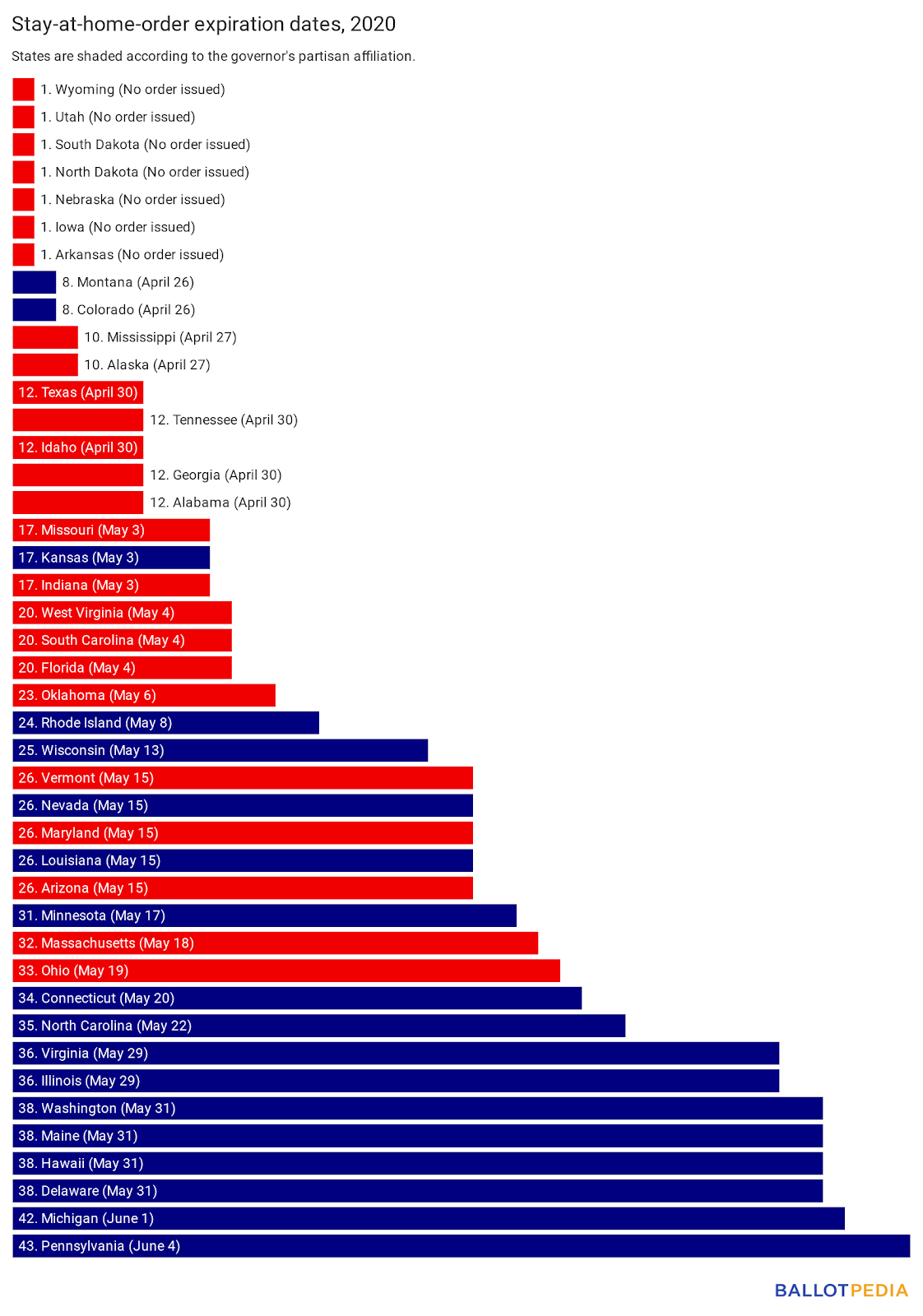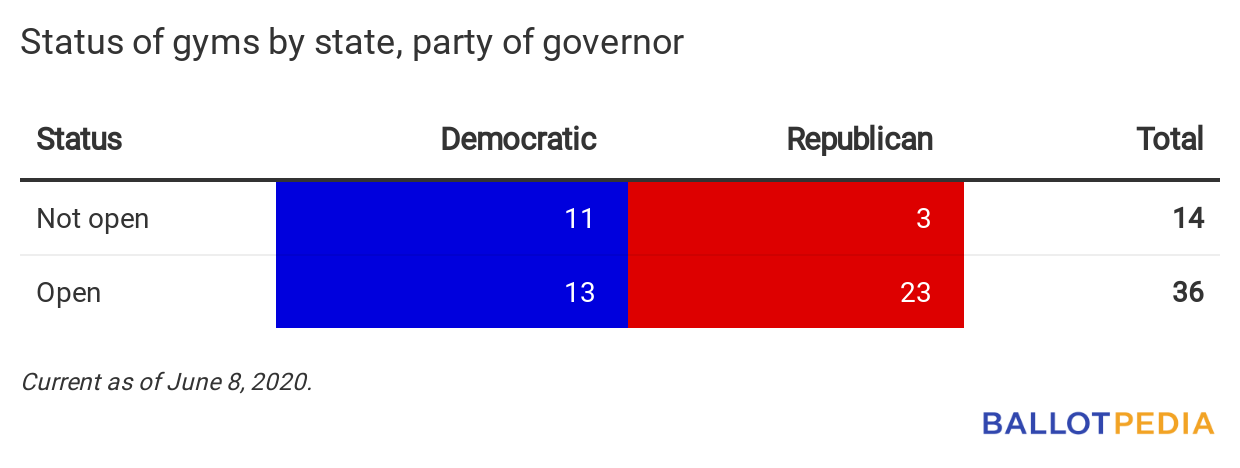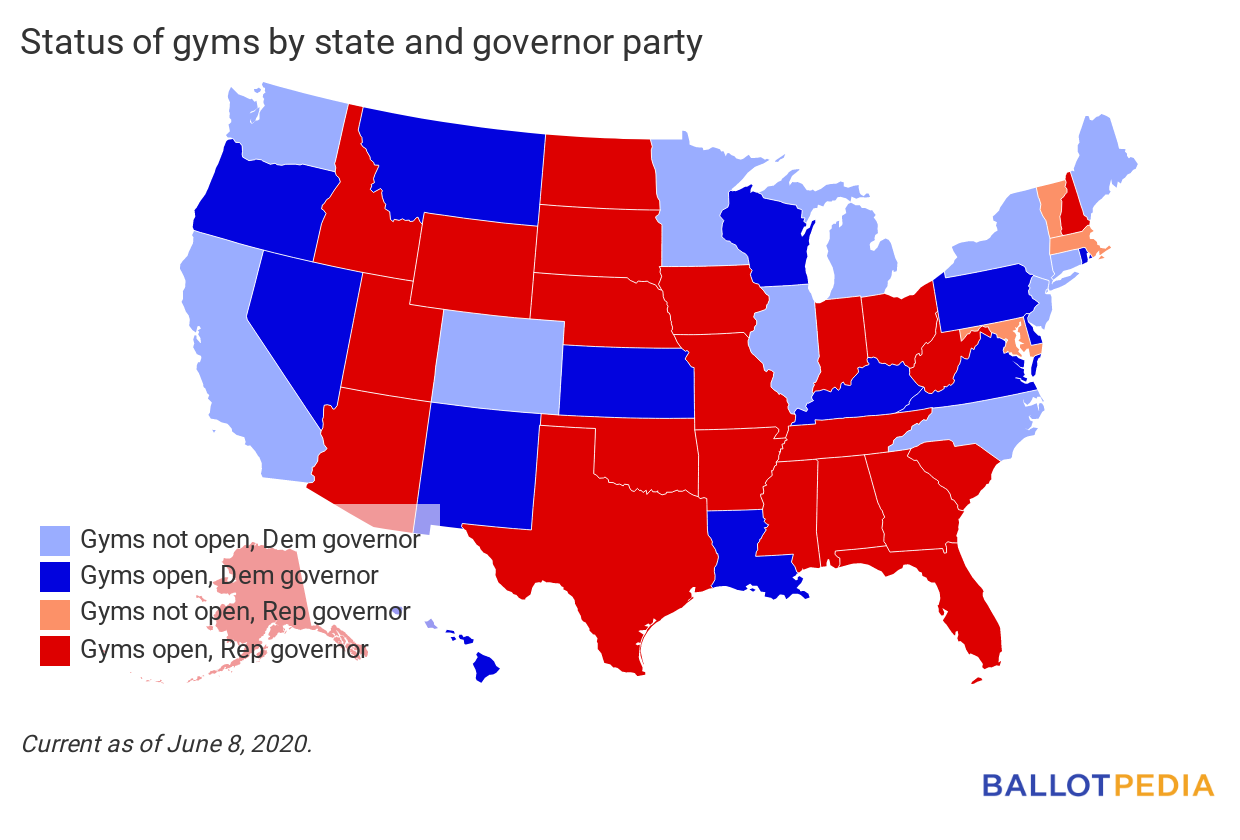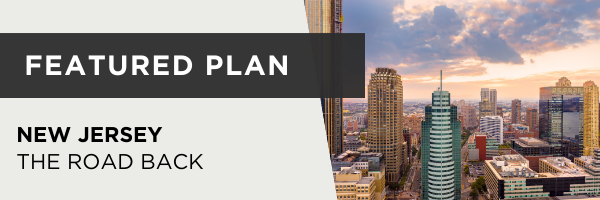Each day, we:
- Track the status of reopening in all 50 states.
- Compare the status of one industry or activity across the country.
- Provide in-depth summaries of the latest reopening plans.
- Give you the latest stories on other reopening plans and ideas.
Want to know what happened Friday? Click here.
The next two days
What is reopening in the next two days? Which stay-at-home orders will expire?
June 9
- New York (Democratic trifecta): The Mid-Hudson region is on track to become the eighth of New York’s 10 regions to enter Phase II of Gov. Andrew Cuomo’s (D) reopening plan, “NY Forward,” on June 9. The Long Island region expected to move into that phase on July 10. Under Phase II, the following businesses and activities are permitted to resume: offices (50% occupancy), real estate, in-store retail (50% occupancy), vehicle sales, leases and rentals, retail rental, repair and cleaning, commercial building management (50% occupancy), and salons and barbershops (50% occupancy). On June 6, Cuomo announced that places of worship could open up to 25% occupancy in Phase II. Cuomo also said that outdoor graduation ceremonies could be held beginning June 26. New York City became the last of the state’s 10 regions to enter Phase I of reopening on June 8. Under that phase, the following businesses and activities are permitted to resume: construction, manufacturing, and wholesale supply chains, agriculture, forestry, and fishing could resume, and retail may open for curbside pickup.
June 10
- Ohio (Republican trifecta): On June 10, the following businesses and activities may resume: aquariums, art galleries, country clubs, ice skating rinks, indoor family entertainment centers, indoor sports facilities, laser tag facilities, indoor movie theaters, museums, playgrounds, public recreation centers, roller skating rinks, social clubs, trampoline parks and zoos. Gov. Mike DeWine announced that casinos, amusement parks and water parks may reopen on June 19.
- West Virginia (Republican trifecta): Private campgrounds and state park campgrounds, including cabins and lodges, can reopen to out-of-state visitors on June 10. Effective June 8, adult sports facilities, low-contact outdoor youth sports, little league practices, and various athletic and band summer training programs are permitted to reopen.
Since our last edition
Have any states opened? For a continually updated article on reopening status in all 50 states, click here. For our last edition, click here.
- California (Democratic trifecta): On June 7, the state released guidance for Phase Three of its economic reopening, which would allow individual counties to begin reopening gyms, bars, schools, and professional sports as early as June 12.
- Connecticut (Democratic trifecta): On June 7, Gov. Ned Lamont (D) released rules for businesses reopening under Phase Two of the state’s reopening plan. Phase Two of the reopening includes amusement parks, hotels, dine-in services at restaurants, museums, indoor recreation, libraries, outdoor events, personal services, and sports and fitness facilities.
- Kentucky (divided government): Educational and cultural businesses and institutions like museums, aquariums, libraries, and distilleries are reopening on June 8. In-home childcare is also allowed.
- Maryland (divided government): On June 8, the city of Baltimore entered a modified phase 1 reopening. However, the city will remain under more restrictions than the rest of the state. Under this phase, churches may hold outdoor services for up to 50 people with social distancing measures. Childcare centers and day camps may open for up to 10 people. Hair salons and barbershops can reopen by appointment only with no more than five people allowed for every 1,000 square feet of space. Retail may also be open for curbside pick up only. On June 8, the Maryland Motor Vehicle Administration’s offices reopened with restrictions such as requiring face masks for staff and the public and social distancing measures.
- Massachusetts (divided government): On June 6, Gov. Charlie Baker (R) announced that the state would enter Phase 2 of his reopening plan beginning June 8. Phase 2 reopenings will happen in two parts. The first part of Phase 2 includes: retail (40% of occupancy), outdoor dining at restaurants, childcare facilities and day camps, funeral homes, higher education, historical spaces, hotels and lodging (no events), outdoor recreations, personal services such as home cleaning, warehouses and distribution. Professional sports may resume practice on June 8, but games are not allowed and practices are closed to the public. Youth sports and adult amateur sports may resume as well. The second part of Phase 2, which at this time has no firm date, will include indoor dining and personal services such as nail salons and tattoo parlors.
- Michigan (divided government): Effective June 8, restaurants and outdoor public swimming pools are permitted to reopen at 50% capacity. Additionally, day camps, libraries, and museums can also reopen.
- Mississippi (Republican trifecta): DMV’s in the state are reopening on June 8.
- North Carolina (divided government): On June 5, Gov. Roy Cooper (D) vetoed House Bill 536, which would have allowed certain restaurants to offer outdoor dining and beverage service. Cooper released the following statement about the veto, “State and local government leaders must be able to act quickly during the COVID-19 emergency to prevent a surge in cases that could overwhelm hospitals and harm the public. House Bill 536 would limit the ability of leaders to respond quickly to COVID-19 and hamper the health and safety of every North Carolinian.” On June 8, the North Carolina State Senate is expected to vote on House Bill 594, which would allow gyms, health clubs, and fitness centers to reopen. If passed, the bill would be sent to the state House. North Carolina is among seven states where a three-fifths vote of both chambers is required in order to override a gubernatorial veto. Republicans control 29 of the 30 seats required to override a veto in the state Senate and 65 of the 72 seats required in the state House.
- North Dakota (Republican trifecta): Gov. Doug Burgum (R) signed an executive order on June 5 that modified restrictions on visitations to long-term care facilities, including nursing homes The order also allows visitations to resume in phases as outlined in the state’s Vulnerable Population Protection (VP3) Plan. Effective June 5, the state strongly encourages outdoor visitation by appointment with social distancing and personal protective equipment, including masks. Residents are urged to work with long-term care facility staff on appointments and details.
- Oregon (Democratic trifecta): Gov. Kate Brown (D) announced Deschutes, Jefferson, and Umatilla counties could enter the second phase of the state’s reopening plan starting June 6. Phase Two allows recreational sports and businesses like movie theaters, bowling alleys, and pools to begin reopening.
- Tennessee (Republican trifecta): Gov. Bill Lee’s (R) Economic Recovery Group The Economic Recovery Group assembled by Gov. Bill Lee (R) released updated guidelines for close contact business, exercise facilities, non-contact recreation, and large venues and community events, including attractions. The new guidelines for close contact businesses, exercise facilities, and recreation emphasize social distancing rather than capacity limits. For attractions, large venues, and community events, including fairs, organizers should reduce occupancy to allow for social distancing and encourage face coverings.
- Utah (Republican trifecta): On Friday, June 5, Gov. Gary Herbert (R) extended the current health risk guidelines for the state through June 12. Part of Utah’s reopening plan includes a four-phase, color-coded guidance system. All but three cities in the state have advanced to the yellow phase of reopening. Bluff, Mexican Hat, and Salt Lake City remain in the orange phase, under tighter restrictions, due to health risks related to COVID-19. Herbert said that parts of Utah could advance to the last stage of reopening, the green phase, by the end of the month.
- Vermont (divided government): Effective June 8, restaurants are permitted to reopen to indoor dining at 25% capacity or 10 total customers and staff combined, whichever is greater. Travel restrictions for out-of-state visitors from some counties in New England and New York were also lifted. The Agency of Commerce and Community said it would release a map on June 8 at 5 p.m. identifying the counties the 14-day quarantine requirement no longer applies to.
Update on stay-at-home orders
Forty-three states issued orders directing residents to stay home except for essential activities and the closure or curtailment of businesses each state deemed nonessential. Seven states did not.
As of June 8, stay-at-home orders have ended in 36 states. Eighteen of those states have Republican governors and 18 have Democratic governors (including Wisconsin, where the state Supreme Court invalidated the stay-at-home order).
Of the seven states with active stay-at-home orders, six have Democratic governors and one has a Republican governor. They are (with expiration date):
- New Hampshire (June 15, Republican governor)
- New York (June 27, Democratic governor)
- New Mexico (June 30, Democratic governor)
- California (no set expiration date, Democratic governor)
- Kentucky (no set expiration date, Democratic governor)
- New Jersey (no set expiration date, Democratic governor)
- Oregon (no set expiration date, Democratic governor)
Here’s which stay-at-home orders have expired.

Tracking industries: Gyms and fitness centers
All 50 states began to reopen in some way. Here, we give the status of one industry or activity across the states. Today’s question: in which states are gyms permitted to reopen?
Gyms and fitness centers are allowed to reopen, at least regionally, in 36 states, while they remain closed in 14 states. In our May 21 review of this industry, gyms were allowed to open in 25 states and were closed in 25 other states. At the time, the partisan breakdown was as follows:
- 6 states with Democratic governors were open
- 19 states with Republican governors were open
- 18 states with Democratic governors were closed
- 7 states with Republican governors were closed
In the past few weeks, 11 more states have allowed gyms and fitness centers to open. The new partisan breakdown is:
 

This is an in-depth summary of one of the latest reopening plans. Is there a plan you’d like us to feature? Reply to this email and let us know. Click a state below to read a previous Featured Plan.
Previous featured plans
On May 18, New Jersey Gov. Phil Murphy (D) announced “The Road Back: Restoring Economic Health Through Public Health,” a three-stage approach to reopening. Throughout the first stage, businesses and activities deemed low-risk have been allowed to reopen with safety requirements. Stage 2 is set to begin June 15.
Murphy established the following criteria for determining when the state could move from one stage to the next:
- Sustained improvements in public health indicators, including new COVID-19 cases, hospitalizations, individuals in intensive care, and ventilator use.
- Substantial increase in testing and contact tracing capacity.
- Sufficient resilience in New Jersey’s health care system to include adequate bed capacity, ventilators, personal protective equipment, and workforce.
- Widespread safeguarding of workplaces.
- Widespread safeguarding and capacity of child care, schools, and transit.
- Continued public compliance.
On March 21, Murphy issued an executive order saying that local governments may not impose restrictions that conflict with the state stay-at-home order. Exceptions include online marketplaces offering lodging, municipal parks, and county parks. Municipalities may also impose additional density and social distancing requirements on restaurants opening for outdoor dining in Stage 2. Municipalities may not reopen businesses at a faster rate than the state allows.
Murphy formed the Governor’s Restart and Recovery Commission, whose members include public health, economic, finance, and business experts. He also created the Governor’s Restart and Recovery Advisory Council, consisting of industry and community organization leaders, to advise state leaders on the economic effects of COVID-19.
Context
- On March 21, Murphy issued a stay-at-home order requiring individuals to stay home except for limited activities, certain businesses to close, and telework where practicable. Gatherings were limited to 10 people or less. The order has no expiration date and remains in effect, though subsequent orders have allowed businesses and activities to resume and increased the outdoor gathering size limit to 25.
- As of June 7, New Jersey had 164,164 confirmed COVID-19 cases and 12,176 deaths. For every 100,000 residents, there were 1,848 cases and 137 deaths. New Jersey’s per capita case and death rate were the second-highest of any state, behind New York.
- New Jersey is a Democratic trifecta, with a Democratic governor and Democratic majorities in both chambers of the state legislature.
Plan details
Stage 1
The following were allowed to reopen:
- State and county parks (parking limited to 50% maximum capacity, no picnicking, additional requirements)—May 2
- Golf courses (staggered tee times, frequent equipment sanitization, additional requirements)—May 2
- Drive-in activities (with social distancing requirements)—May 12
- Non-essential construction (with social distancing and hygiene requirements)—May 18
- Curbside retail (transactions handled in advance, additional requirements)—May 18
- Beaches (pavilions, picnic areas, water fountains, and more remain closed; social distancing measures; additional requirements)—May 22
- Elective surgeries (healthcare staff screening, social distancing in work and common areas, masks where possible, additional requirements)—May 26
Outdoor gatherings of no more than 25 people were allowed, with social distancing and additional requirements, as of May 22. Indoor gatherings remain restricted to 10 people or less.
Stage 2
Dates and requirements for some Stage 2 business reopenings are forthcoming. Where dates and requirements were available as of June 8, information is included below.
- Outdoor dining (limit of 8 people per table, tables at least 6 feet apart, additional requirements)—June 15
- Limited in-person retail (limit to 50% capacity, require face masks for employees and customers, additional requirements)—June 15
- Childcare centers (must submit attestation that they will follow requirements)—June 15
- Hair salons and barber shops—June 22
- Sports activities—(in outdoor settings, no person-to-person contact or sports routinely requiring players to be within 6 feet of one another, additional requirements)—June 22
- Youth summer programs (no residential or overnight camps, must submit attestation that they will follow requirements)—July 6
- In-person clinical research/labs
- Limited fitness/gyms
- Limited in-person government services
- Museums/libraries
Stage 3
Stage 3 may include allowing the following to reopen:
- Expanded dining
- Critical in-office work
- Limited entertainment
- Expanded personal care
- Bars with limited capacity
Precautions across all stages:
- Work that can be done from home should continue to be done from home.
- Clinically high-risk individuals who can stay at home should continue to do so.
- All residents and businesses should follow state and federal safeguarding guidelines: wash hands; wear masks in public; respect social distancing; minimize gatherings; disinfect workplace and businesses; and no mass gatherings
Reactions
- On May 18, Murphy said, “Through our combined efforts, we have flattened the curve of COVID-19 cases, and we are well-positioned to continue our restart and recovery process. … Our multi-stage approach uses science, data, and facts to determine which businesses and activities can reopen according to their risk level and challenges they face to safeguard public health. Additionally, we will be guided by our ability to protect against a new COVID-19 outbreak with expanded testing and contact tracing, and clear social distancing safeguards in place. We are currently in Stage 1, and we will aim to move through each stage quickly, but also judiciously, with the public health of our communities and all New Jerseyans in mind.”
- On May 29, Politico reported that State Assembly Speaker Craig Coughlin (D) said, “The stay-at-home order has been critical in helping flatten the curve. The State is continuing to show positive signs that we are on the road to reopening our economy. That said, I support efforts to look to reopen parts of our economy more quickly, on a moving-forward basis.”
- On May 27, the state Senate Republican Caucus sent Murphy a letter saying,
“We urge you to offer clarity about the milestones that must be reached for small shops you have deemed ‘nonessential’ to reopen their doors to customers, for restaurants to serve diners, and for congregations to meet again in houses of worship. Many of those places are ready today to operate safely through the same precautionary measures that we trust to protect us when we visit a supermarket or other ‘essential retail’ business.
“In the absence of specific benchmarks for reopening from your administration, we urge you to review the many thoughtful reopening plans that have been submitted to you by counties, trade groups, and chambers of commerce. If those plans meet CDC guidelines, you should authorize them to be enacted immediately.” |





